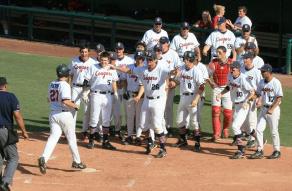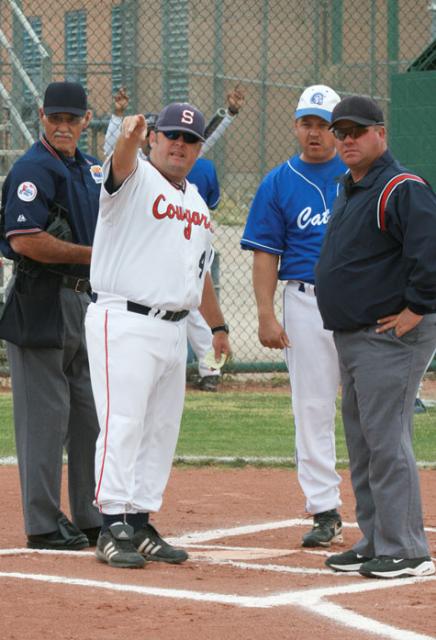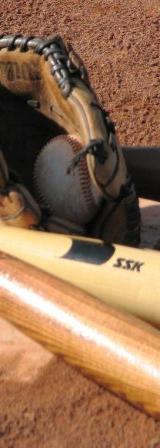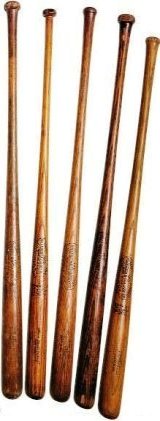 |
||
Game Management For Players ~ Develop A Working Routine!Game management player needs is all about creating a competition day, working routine, for your baseball team. Within the framework of that routine time needs to be scheduled for all the team's needs, as well as some space provided whereby everyone is able to have some personal time for their own unique preparations.  Being On Time, A Baseball Skill ~ A Life SkillIt is essential for team morale, group and individual focus, that everyone be on time. I was taught early on in my baseball career that "on time" meant at least 15 minutes early. If the day's activities are to start at say 2:30, everyone needs to be completely dressed, have their gear and be ready to go at exactly 2:30. It is frustrating to have individual (s) just coming through the gate at 2:30, still needing to change into their cleats and rummage through their bag to find things. The schedule works the same for out of town trips, 15 minutes early. Once the routine is established, loss of practice time is eliminated, as well as having to wait for late arrivals to the bus, or having to leave someone at home. It becomes great preparation for the world of work, no matter what line of work it may be. Equipment Set Up ~ Team Gear First, Personal Gear SecondBaseball equipment and the dugout are better set up before anything else starts, that way athletes and coaches are able to maintain an even flow right up to the first pitch. With everything in the dugout ready to go, focus can then be on the process of preparing to play the game. Helmets and bats in their respective locations. Baseballs out. Personal gear stored out of the way. Pregame Hitting ActivityIf you are someplace which allows an actual BP before a game, the initial setup and time allotments are much greater. Our situations for weekday games are such that our BP is compressed into short and soft toss with smush balls. We jump right into that activity as soon as the gear is set up. Smush balls create a quick and easy way to get a lot of swings for the entire team, in the short amount of time available. Whiffle balls also work; but are harder to throw and if the wind is blowing, you are in trouble. Warm Up Routine ~ Stretches, Form Running And ThrowingHow much of what is included in this time slot is a matter of personal preference. The routine used everyday in practice is the routine to use here, providing the team with a sense of familiarity and comfort. Sample Throwing Routine, One That We Currently UseThe distances listed are for high school athletes, but can easily be scaled down to adjust for the age and skill level of any group. The idea is to provide them with a gradual warm up, which culminates in some long toss throwing and quick hands activity each day.
Taking Pregame Infield And Outfield ~ Something To Take Pride In!Pregame infield and outfield, an area that quite often becomes a go through the motions activity, rather than an activity with a purpose. This is one of those areas whereby a baseball coach can be creative, make this part of your pregame special, out of the ordinary. Get your team to believe this is something special, because it is. Here is everyone's opportunity to set the tone for the game, lock in their focus and create some energy. As they get older, a pregame infield may be the one opportunity a college or professional scout will have to see them field and throw. While at bats are a given in a game, the opportunity to field a ground ball or fly ball, or throw a runner out is not. Your pregame is an opportunity to set the tone for the game with your opponent, that chance to put it in their mind that you know what you are doing and that they are in for a game. Correograph your routine. Personally, I feel there is nothing worse than a long, drawn out infield/outfield. It's like a long, slow ballgame, it puts everyone to sleep. Ten minutes, start to finish. An even, steady pace, all controlled by the coach with the fungo. Keep all balls easy to get to, sharp and crisp. Make them look good. If they look good, they feel good. The confidence rises as do the teams' chances for success. Ending the outfield portion with a "do or die" throw to the plate and the outfielder coming on off the field, is a high energy end for that segment. On the grass, slow high hopper to the infielders throwing to the plate and continuing off the field, then a pop fly to the catcher, all designed to end on a high note. If you have a PA system, set up a music arrangement which creates a tempo. You will feel it, as will your team. Between Innings Infield And OutfieldBetween innings is another area where, with some adjustments, you can help them maintain focus throughout the game. As you watch teams defensively warmup between innings, it is often a talk session, filled with lazy throws and bad mechanics. What is not so often noticed is the loss of focus that creates, often manifested in mental or physical errors. A plan which keeps everyone moving and concentrating can help alleviate those lapses. Speed On / Speed Off The Field ~ Another Area To Make Special!The speed with which a team get on and off the field is an important factor in controlling the pace of the game. Determining what that speed will be for your team is all a part of your game management. I have always felt you can't be too fast; but you can easily be too slow. It helps to explain why you want them to set the pace of the game, not letting their opponent set it for them. It is a part of the mental image you are creating in the minds of your opponent. Not always noticible, this is a subtle way to get inside your opponents head, without them actually realizing you have. Equipment Responsibilities For Travel DaysEvery team needs a fair and equitable system for making sure all team equipment needed gets on the bus and to the field, then back on the bus and back into storage when you return home. Assigning two players to each piece of gear you have, one to get it on the bus and off the bus to the field, the other from the game back on the bus, and off the bus back in the equipment storage at home. If they have no assigned equipment responsibility, they have responsibility for cleaning up the bus. Everyone has something to do. Should one of the two players assigned a piece of equipment not make the trip, the one left covers it both ways. Player's Personal Preparation Time

This is an area where they need some assistance and guidance from the coaches. Few will come by it naturally! Success Is The Sum Of Small Efforts, Repeated Day In And Day Out! ( Robert Collier )Additional Baseball Game Management TopicsGame Management ~ Prepare Them In Practice, So Everyone Can Enjoy The Games! ~ Dugout Game Management ~ The Nuts And Bolts Of Keeping Your Dugout Running Smoothly! return from game management players to the ole ballgame.com  |
 |
|
 |
||
|
| ||